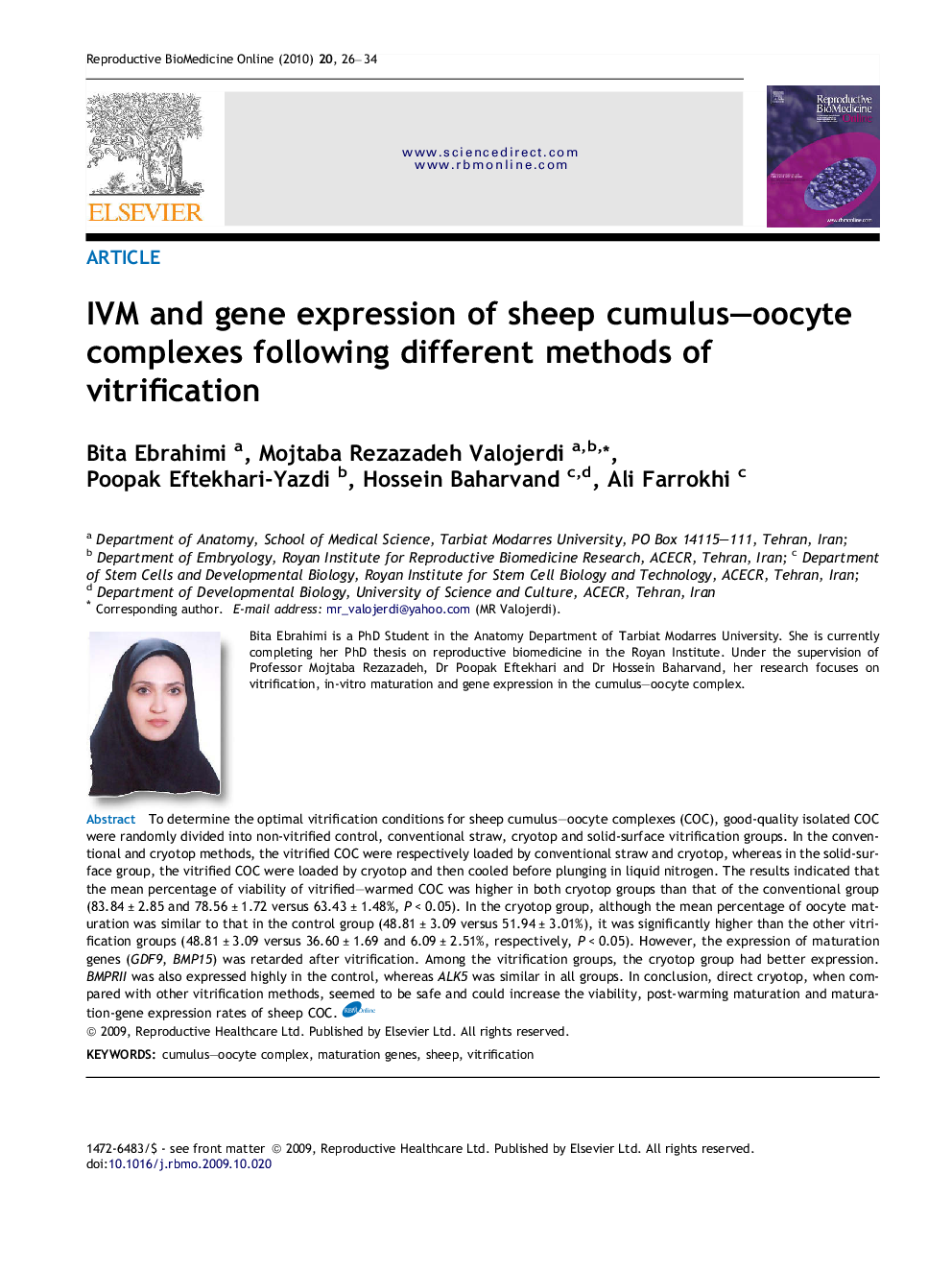| Article ID | Journal | Published Year | Pages | File Type |
|---|---|---|---|---|
| 3971905 | Reproductive BioMedicine Online | 2010 | 9 Pages |
Abstract
To determine the optimal vitrification conditions for sheep cumulus-oocyte complexes (COC), good-quality isolated COC were randomly divided into non-vitrified control, conventional straw, cryotop and solid-surface vitrification groups. In the conventional and cryotop methods, the vitrified COC were respectively loaded by conventional straw and cryotop, whereas in the solid-surface group, the vitrified COC were loaded by cryotop and then cooled before plunging in liquid nitrogen. The results indicated that the mean percentage of viability of vitrified-warmed COC was higher in both cryotop groups than that of the conventional group (83.84 ± 2.85 and 78.56 ± 1.72 versus 63.43 ± 1.48%, P < 0.05). In the cryotop group, although the mean percentage of oocyte maturation was similar to that in the control group (48.81 ± 3.09 versus 51.94 ± 3.01%), it was significantly higher than the other vitrification groups (48.81 ± 3.09 versus 36.60 ± 1.69 and 6.09 ± 2.51%, respectively, P < 0.05). However, the expression of maturation genes (GDF9, BMP15) was retarded after vitrification. Among the vitrification groups, the cryotop group had better expression. BMPRII was also expressed highly in the control, whereas ALK5 was similar in all groups. In conclusion, direct cryotop, when compared with other vitrification methods, seemed to be safe and could increase the viability, post-warming maturation and maturation-gene expression rates of sheep COC.
Related Topics
Health Sciences
Medicine and Dentistry
Obstetrics, Gynecology and Women's Health
Authors
Bita Ebrahimi, Mojtaba Rezazadeh Valojerdi, Poopak Eftekhari-Yazdi, Hossein Baharvand, Ali Farrokhi,
